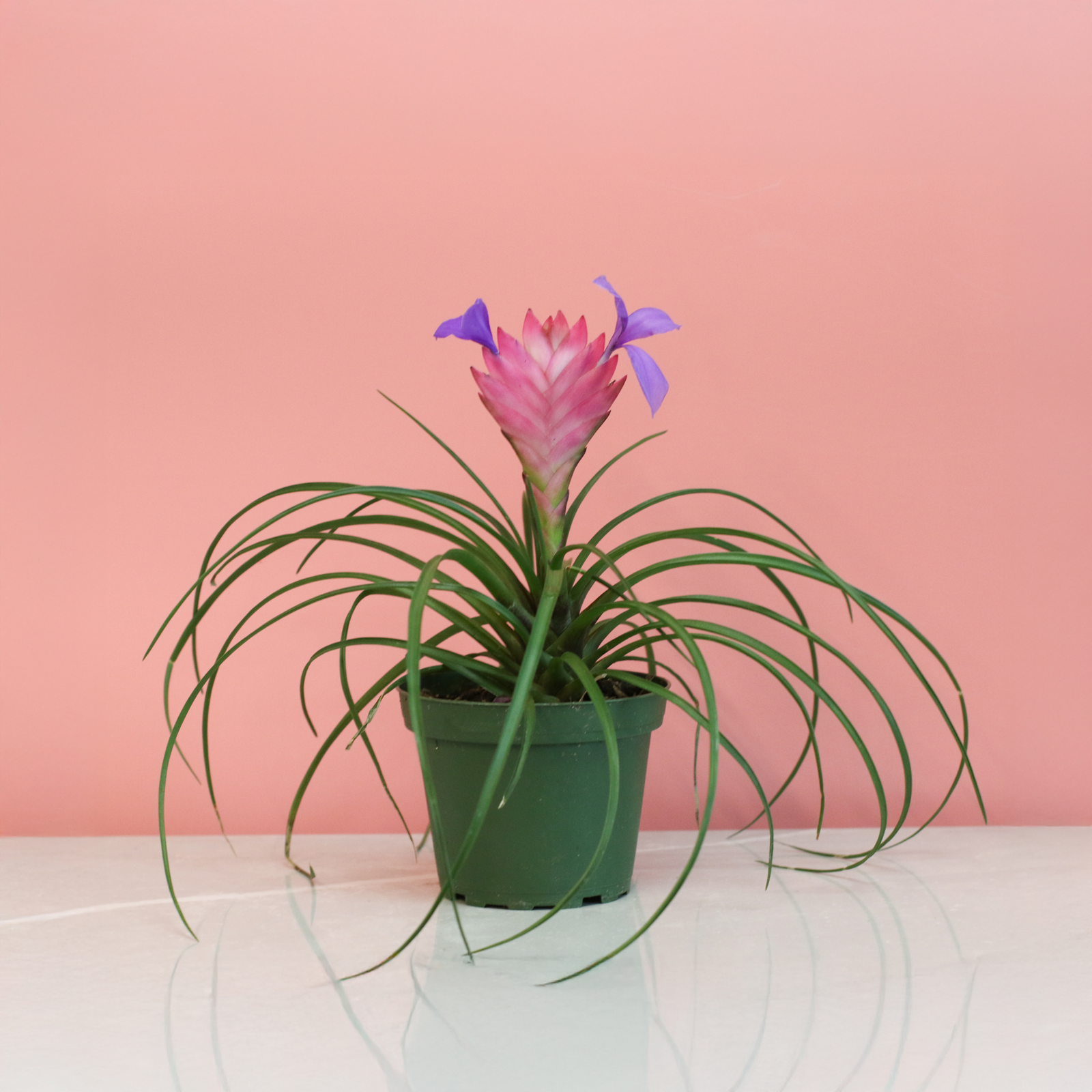A client reached out wanting to follow up with us about her plants that she had ordered last Christmas. She said that everything that she ordered was blooming and growing nicely, except for her tropical Pink Quill Air Plant. She said that she thought she might have killed it as she explained that the bracts were losing it’s pink vibrant color. After listening to her concerns, I assured her that her plant was in fact still very much alive. I told her to prune her plant and to rid it of any dead, dry or drooping parts.
Once she cut back all the dead leaves, she said that she could finally see the little pups forming. She was overjoyed to have learned that she was not in fact a plant killer. She actually felt very excited and encouraged after she understood the different cycles that some plants experience. We wanted to share this with you as well. Maybe you're experiencing something similar. We hope this helps!
The life of a pink quill air plant begins as a tiny seedling. Seeds can take weeks to months to germinate, depending on the weather conditions in your area. After germination, the plant enters the juvenile stage, where it starts to grow larger and develop its characteristic shape and color. This stage can last for several months to a few years, depending on the species and the plant’s growing conditions.
Once the plant reaches maturity, it will start to produce its stunning pink bracts. It may resemble a flower, but these are actually modified leaves. Eventually, small purple flowers will also bloom from the pink bract that the plant produced. During the flowering stage, which can last several weeks, the pink quill air plant will produce its colorful bracts and purple mini flowers. The flowers are usually short-lived but add a beautiful touch to the plant's appearance. Each flower lasts on average about a day or two.
Remove any fading or drooping flowers from your plant. The Air Plant will continue to bloom, grow and it will also produce pups at the base. Your plant's bract will begin to turn green until it's fully brown. The plant is at the end of its cycle. Look closely and if you prune your plant properly, you will see that every end brings forth a new beginning. These offshoots or baby plants have graciously given you a brand new generation to enjoy in the future! These pups can be left to grow into new plants or carefully removed and propagated separately.
Through pupping, the plant can reproduce and create new generations. This cyclical process allows the plant to continue its life cycle. It's important to note that air plants are unique in that they don't require soil to grow. Instead, they absorb nutrients and moisture through their leaves from the air. Proper care, including regular misting or soaking, bright indirect light, and good air circulation, can help your pink quill air plant thrive through its life cycle.

